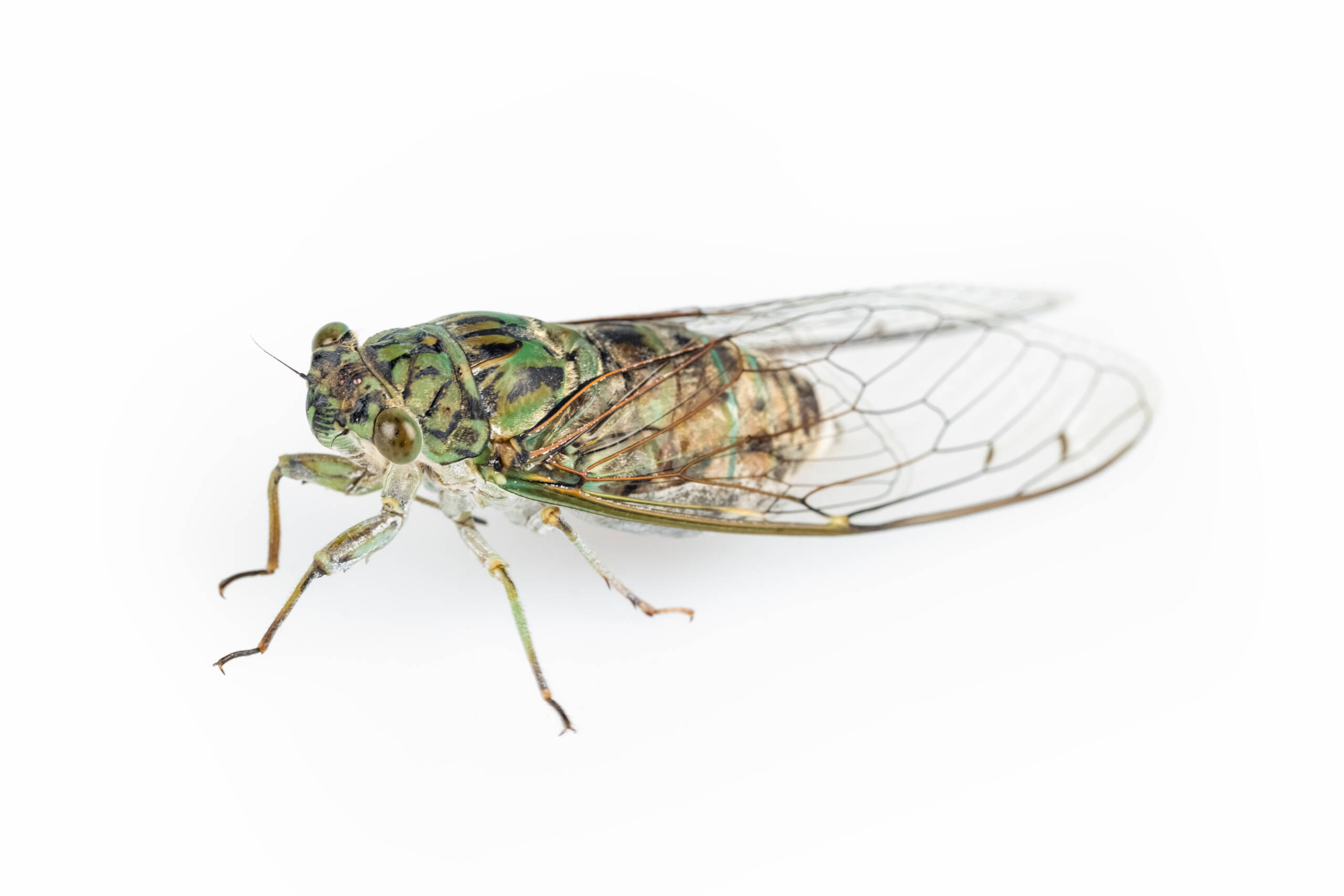1. About Cicadas
Cicadas are large, winged insects known for their distinct buzzing or droning sounds. They belong to the order Hemiptera and are primarily found in temperate and tropical regions around the world. Cicadas are most famous for their life cycle, which includes long periods of underground development, followed by a brief period of adult emergence. Depending on the species, cicadas can emerge every year or after a long period, such as 13 or 17 years for periodic cicadas. These insects do not pose a direct threat to humans but can cause damage to trees and plants when feeding.
2. How to Get Rid of Cicadas
While cicadas are not harmful to humans, they can cause damage to young trees, shrubs, and plants by laying eggs in the branches. To prevent cicada damage, you can wrap young trees and shrubs with netting to keep them away during their mating season. Cicadas can also be controlled by using insecticides during their nymph stage before they emerge as adults. However, since they only live for a short period as adults, it’s usually not necessary to completely eradicate them. If an infestation becomes severe, consulting a pest control professional can help manage the situation effectively.
3. Introduction
Cicadas are a fascinating group of insects that have one of the most unique life cycles in the insect world. Known for their loud, distinctive calls, cicadas are often associated with the warmer months of summer. These insects are most noticeable when they emerge from the ground, signaling the arrival of summer. Though they can be noisy and overwhelming, cicadas generally do not pose a significant threat to humans. The main concern arises when large populations emerge, potentially damaging trees and crops by laying eggs in plant tissue.
4. Identification of Cicadas
Cicadas are large insects, typically 1 to 2 inches (25-50 mm) long, with wide, transparent wings that have dark veins. Their bodies are typically brown or black with markings of green or yellow, depending on the species. One of the most noticeable features of cicadas is their large, compound eyes and distinctive, three-part body. Male cicadas are particularly known for their loud, musical calls, which are used to attract females during the mating season. When at rest, cicadas can often be seen clinging to tree trunks or branches.
5. Behavior and Habitat
Cicadas live most of their lives underground as nymphs, feeding on the sap of plant roots. Once they reach maturity, they emerge from the soil, shed their exoskeletons, and transform into adults. Cicadas are primarily found in wooded areas and on trees, where they spend their adult life mating and laying eggs. The mating call of the male cicada is one of the most distinctive sounds of summer. Cicadas tend to emerge in large numbers during certain years, with some species appearing every year, while others have a life cycle of 13 or 17 years.
6. Feeding Habits
Cicadas are plant-feeding insects that consume sap from the roots of trees and shrubs during their nymph stage underground. When they emerge as adults, they continue feeding on the sap from tree branches and twigs. While cicadas do not usually cause significant harm to mature trees, heavy infestations can damage young trees, especially by causing deformations when they lay eggs in the bark. Their feeding habits may lead to wilting and leaf drop, but overall, cicadas are not considered major agricultural pests.
7. Prevention and Protection
To prevent cicada damage, consider wrapping young trees, shrubs, and plants with netting or mesh to keep adult cicadas from laying eggs in the branches. Cicadas can be repelled with insecticides, but due to their short adult life cycle, this method may only be useful during peak emergence periods. The best approach to managing cicadas is to focus on protecting young plants and trees from egg-laying and monitoring cicada emergence cycles. After their emergence, cicadas will die off naturally, and damage to trees will stop.
8. Methods of Control
Cicada control focuses on protecting plants, particularly young trees, from damage during the mating season. Using physical barriers, such as tree wraps or netting, helps keep cicadas away from vulnerable plants. Insecticides can also be applied to trees during peak emergence to reduce cicada populations. However, since cicadas are generally not harmful to mature plants, widespread use of chemicals is not recommended. Natural predators, such as birds and other insects, help to reduce cicada numbers during their short life span. Consult a pest control professional if cicada damage becomes extensive.
9. Environmental Impact and Ecology
Cicadas are an important part of the ecosystem, as they serve as food for various predators, including birds, mammals, and reptiles. Their underground life stage helps aerate the soil, which can benefit plant growth. Cicadas also contribute to nutrient cycling by feeding on plant sap and excreting waste that can enrich the soil. Although cicadas can cause damage to young trees when laying eggs, their presence typically does not cause long-term harm to mature plants. Their periodic mass emergence also creates a temporary increase in the food supply for other wildlife.
10. Conclusion
Cicadas are fascinating insects with a unique life cycle, making them an interesting subject for study. While they are often seen as noisy nuisances, they do not pose a significant threat to human health. Their impact on plants is usually limited to young trees and shrubs, and their short adult life span means that any damage they cause is typically temporary. By taking simple precautions, such as netting vulnerable plants and monitoring emergence cycles, you can protect your garden or yard from cicada damage and enjoy their fascinating displays without concern.


